Slide Show: Alexander Gardner's Civil War Photographs
“View of Ditch” — The ditch was used as a Confederate rifle pit during the Battle of Antietam.
Manuscripts Division, Department of Rare Books and Special Collections, Princeton University Library/Ricardo Barros
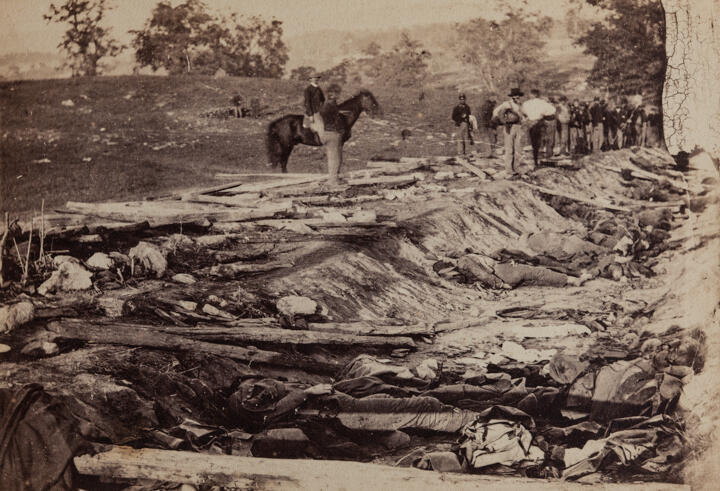
“View of Ditch” — The ditch was used as a Confederate rifle pit during the Battle of Antietam.
Manuscripts Division, Department of Rare Books and Special Collections, Princeton University Library/Ricardo Barros
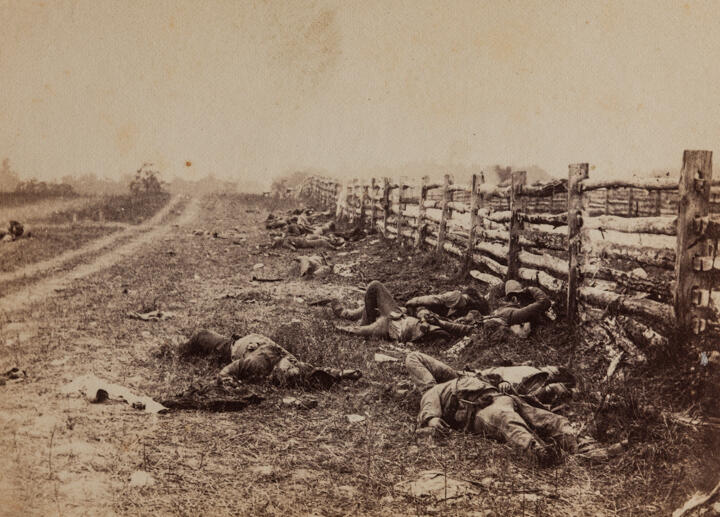
“View in the Field” — Two days after the battle of Antietam, Gardner shot this image of Confederate corpses lining the Hagerstown Road.
Manuscripts Division, Department of Rare Books and Special Collections, Princeton University Library/Ricardo Barros
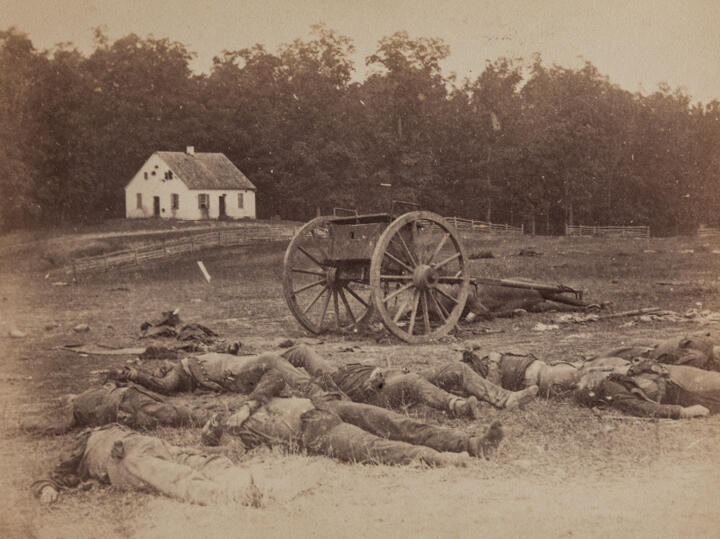
“Completely Silenced” — Dead Confederate artillerymen as they lay around their battery following the Battle of Antietam. In the background is Dunker Church.
Manuscripts Division, Department of Rare Books and Special Collections, Princeton University Library/Ricardo Barros
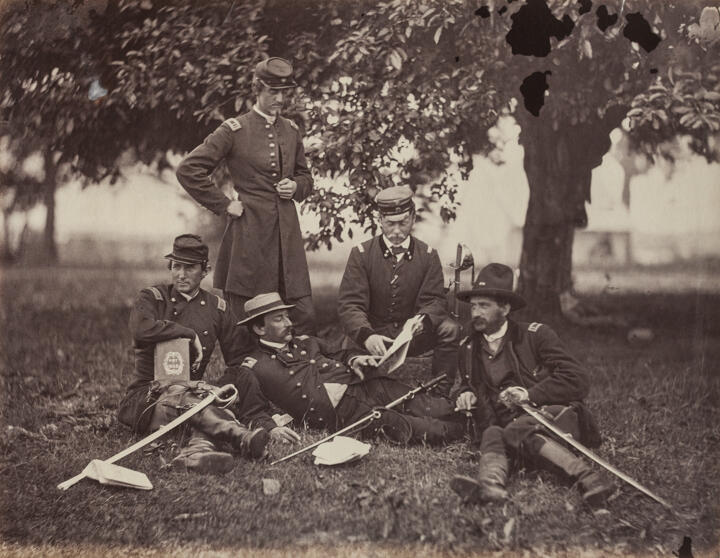
“Studying the Art of War, Fairfax Court-House, June 1863” — The five men shown here, including a Prussian and a Swede, underscore the international flavor of the war. Gardner singled out for special praise Col. Ulric Dahlgren (standing), “handsome, chivalric, one of the bravest of the brave,” who later was killed while leading an attack on Confederate headquarters in Richmond.
Graphic Arts Collection, Department of Rare Books and Special Collections, Princeton University Library/Ricardo Barros

“Guard Mount Headquarters, Army of the Potomac” — The 114th Regiment of Pennsylvania Volunteers, under the command of Captain Collis, chose to fight in the gaudy red uniforms of Zouaves, French soldiers in the north of Africa. Wrote Gardner: “The affection of the soldiers for color is extraordinary; no statistics, showing the large increase of casualties in showy uniforms, could induce the Zouzous to part with theirs, and in this dress the 114th … participated in some of the bloodiest battles.”
Graphic Arts Collection, Department of Rare Books and Special Collections, Princeton University Library/Ricardo Barros
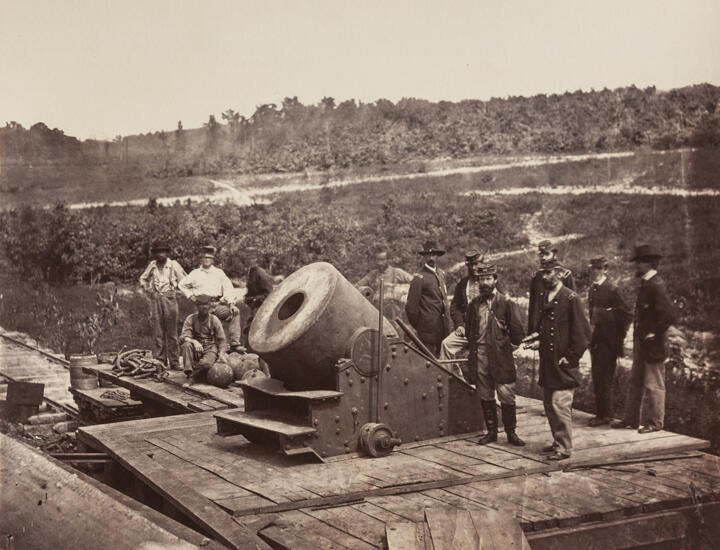
“Mortar Dictator, Front of Petersburg, October 1864” — This mortar weighed 17,120 pounds and was capable of firing a 200-pound shell more than 2.5 miles, as it is believed to have done during the siege of Petersburg. “The bursting of the shell was described as terrific,” wrote Gardner, “an immense crater being formed in the ground where it fell, and earth, stones, and sod being scattered in every direction, much to the consternation of the inhabitants of the place.”
Graphic Arts Collection, Department of Rare Books and Special Collections, Princeton University Library/Ricardo Barros
The Latest
See allRelated News
University Clarifies New No-Recording Policy
The new FAQ says the University community generally has ‘a reasonable expectation of privacy’ in private conversations
Professor Brenden Lake Zeroes In Where Machine and Human Intelligence Meet
‘One of the biggest scientific mysteries is how our own minds work,’ Lake says












No responses yet